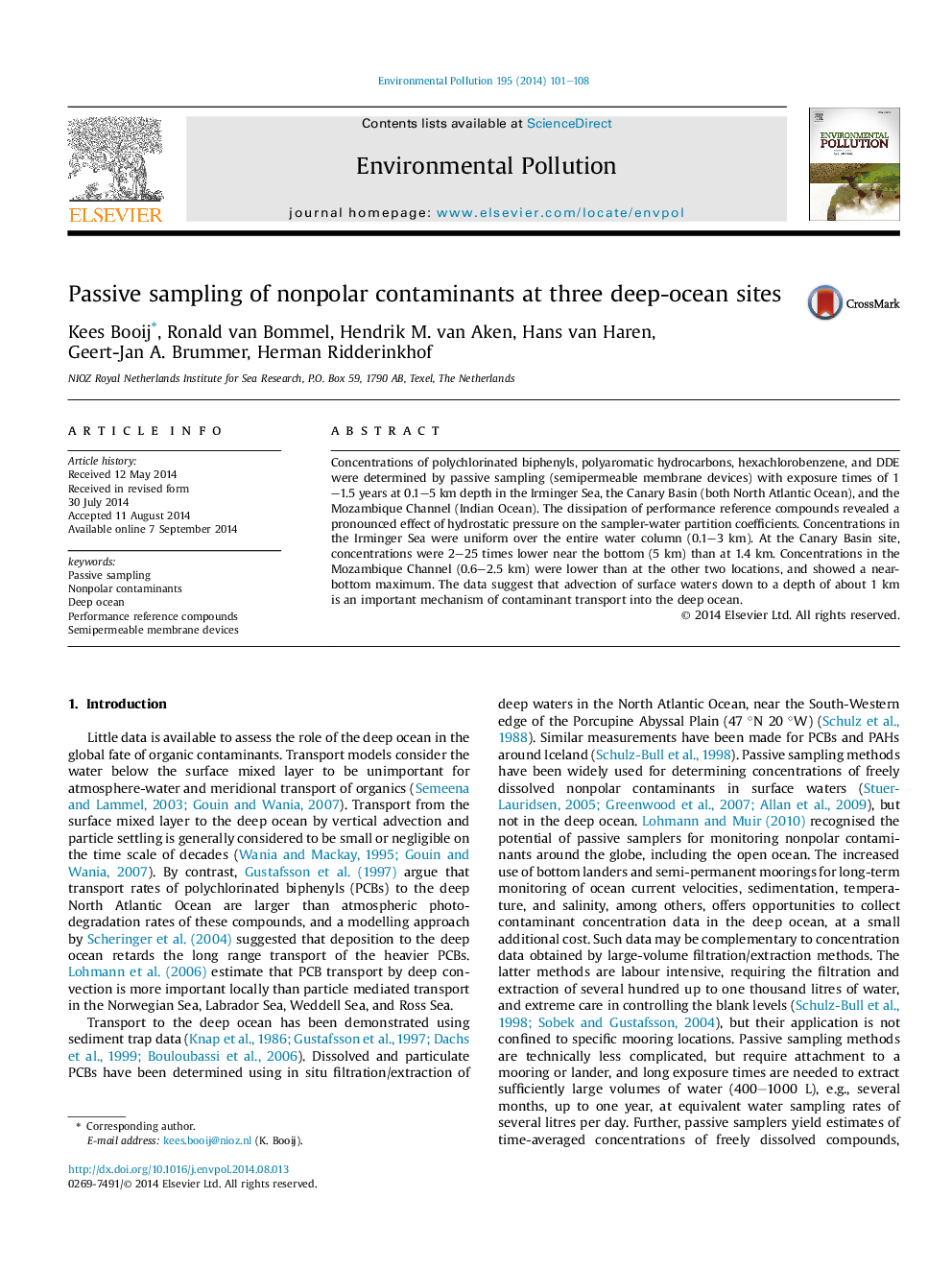| Article ID | Journal | Published Year | Pages | File Type |
|---|---|---|---|---|
| 4424386 | Environmental Pollution | 2014 | 8 Pages |
•Passive samplers were deployed in the deep ocean to study nonpolar contaminants.•Dissipation of Performance Reference Compounds depended on water depth.•Advection is important for the transport of nonpolar contaminants to the deep ocean.•Pronounced differences in concentration gradients with depth were observed among sites.•Elevated contaminant concentrations were observed well below the surface mixed layer.
Concentrations of polychlorinated biphenyls, polyaromatic hydrocarbons, hexachlorobenzene, and DDE were determined by passive sampling (semipermeable membrane devices) with exposure times of 1–1.5 years at 0.1–5 km depth in the Irminger Sea, the Canary Basin (both North Atlantic Ocean), and the Mozambique Channel (Indian Ocean). The dissipation of performance reference compounds revealed a pronounced effect of hydrostatic pressure on the sampler-water partition coefficients. Concentrations in the Irminger Sea were uniform over the entire water column (0.1–3 km). At the Canary Basin site, concentrations were 2–25 times lower near the bottom (5 km) than at 1.4 km. Concentrations in the Mozambique Channel (0.6–2.5 km) were lower than at the other two locations, and showed a near-bottom maximum. The data suggest that advection of surface waters down to a depth of about 1 km is an important mechanism of contaminant transport into the deep ocean.
Graphical abstractFigure optionsDownload full-size imageDownload as PowerPoint slide
